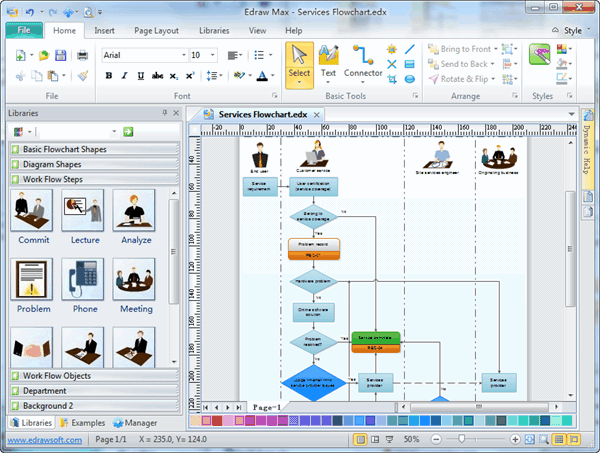Image source: http://lookaheadstayahead.com/wp-content/uploads/2012/11/customerExperience.gif?__hstc=246535899.192318de2db4c81d8285ca06eaf7e52d.1435222465442.1437721958166.1437734753317.88&__hssc=246535899.33.1437734753317&__hsfp=2025879563
Lean theories emerged from agile manufacturing processes and with the emergence of Lean Startup theories and more recently Lean UX, it has become more important than ever to incorporate these processes into our work. Lean theory centers around staying agile, testing and validating ideas, and pivoting quickly when things dont work out. In the field of website design, the possibilities for changing a website are endless and often quick to do. One approach that works well, however is to use wireframe tools to plan and structure websites, so that they can easily be changed based on feedback before development. This often results in shorter iterations and faster development times.
1. Be inventive
One of the benefits of using a wireframe tool is that designers do not need to focus on coding, or creating pixel-perfect Photoshop images right at the beginning of the design process. It is recommended to brainstorm ideas within a team, to create paper prototypes and to experiment. When it comes to the point that you want to try out concepts in digital form, then you can try using a wireframe tool. Without programming, you will be able to focus on the visual layout and content of your website and feel freer to experiment.
2. Plan what you need to plan
One error that people often make in the wireframing stage of a website is to plan each page in minute detail. Often sites have repeating structures and some things can only be determined once there is content from other departments. Focus on the most important parts of your website and the other pages that your users do not visit as much will be able to fit into your concept later.
3. Cut your review processes
Look for a wireframe tool that allows you to send your wireframes to others to approve. There are some wireframing tools that enable others to comment and even edit the prototypes you make. This means saving on emails, which can quickly become difficult to keep up with. Some wireframe tools allow users to print out a specification document, allowing for clients to sign off on processes quickly and often with an understanding of the final outcome.
4. Collaborate
Aside from the review processes that are inevitably involved in design projects, you should also embrace your stakeholders. With the wireframe tool that I use, I can allow others to edit my prototypes and make comments. When I create a mockup of a landing page, someone from my marketing team will then comment to let me know if a change needs to be made. This is much quicker than making changes once the code has been written.
5. Get feedback from users
The main concept of Lean theory is to validate concepts early. There is no point in building a product that does not add value to your users, which is why you should always test your prototypes out with users. This will reaffirm your belief that you are building a valuable product, and will also show up any usability issues which could affect conversion rates, for example.
6. Iterate
Look at your wireframes and prototypes as works in progress. By making many small changes based on feedback from users and stakeholders, you will often be able to shape your website design into something that all parties will approve of. Keep track of your past iterations in your prototyping tool and remember to simulate your prototypes to show stakeholders when any important changes have been made.
7. Use metrics for your next iteration
When it gets to the point that you have built up your prototype with detail and even coded your website, it is time to go live. This is the most important stage of all, as your metrics from services such as Google Analytics will give you a good indication of what works and what doesnt. When your website is live, never stop tweaking at the design and checking with your metrics what is boosting your conversion rate. In the long term this will have a large impact.
Lean thinking is not about simply prototyping ideas, but about seeing each stage of development as a predecessor to the next. Designers must be willing to collaborate with stakeholder, be open to feedback and be efficient with their time. Once an application is live, this is the time to tweak and validate ideas.
